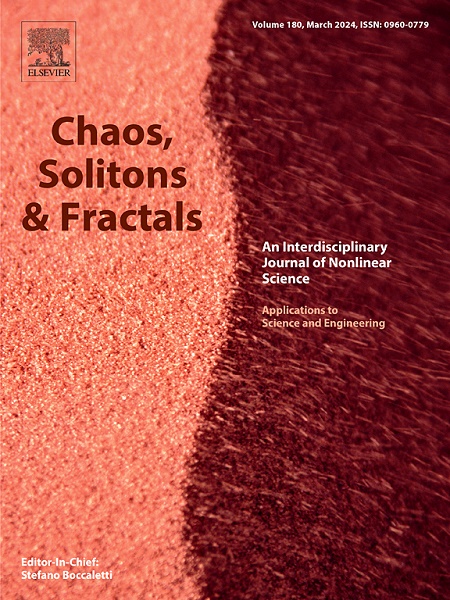Fractal power law and polymer-like behavior for the metro growth in megacities
IF 5.3
1区 数学
Q1 MATHEMATICS, INTERDISCIPLINARY APPLICATIONS
引用次数: 0
Abstract
The paper analyzes the correlation between the population of megacities and the size of the metro in these megacities. The correlation was found only for a sampling of large cities with an area of more than 1000 km2 with a number of metro stations of more than 41. For the first time, it was shown that for such a sampling of the largest megacities, consisting of 56 cities, there is a correlation between the number of metro stations St and the population of the city P of the form of the power law , where is the average number of people served by one station, is the exponent. It is shown that all cities in the sampling can be divided into 4 groups. Each group has approximately the same average number of people served by one station. It varies from to thousand people per station. The common features of cities included in different groups are discussed. It is assumed that the discovered correlation is of a fractal nature. It is shown that the fractal dimension of the external perimeter for a two-dimensional percolation cluster has a the same value. A qualitative model is proposed that can explain such fractal behavior for metro networks in megacities. It is shown that the discovered exponent in the correlation is close in value to the fundamental percolation constant (), which characterizes the most general topological properties of fractals, primarily such as connectivity close to critical point (Milovanov, 1997). A possible relation between the structure of large metro networks and this percolation constant is discussed. An analogy is shown between large metro networks and transport routes formed by ants in large anthills, as well as with branched polymer molecules.

求助全文
约1分钟内获得全文
求助全文
来源期刊

Chaos Solitons & Fractals
物理-数学跨学科应用
CiteScore
13.20
自引率
10.30%
发文量
1087
审稿时长
9 months
期刊介绍:
Chaos, Solitons & Fractals strives to establish itself as a premier journal in the interdisciplinary realm of Nonlinear Science, Non-equilibrium, and Complex Phenomena. It welcomes submissions covering a broad spectrum of topics within this field, including dynamics, non-equilibrium processes in physics, chemistry, and geophysics, complex matter and networks, mathematical models, computational biology, applications to quantum and mesoscopic phenomena, fluctuations and random processes, self-organization, and social phenomena.
 求助内容:
求助内容: 应助结果提醒方式:
应助结果提醒方式:


